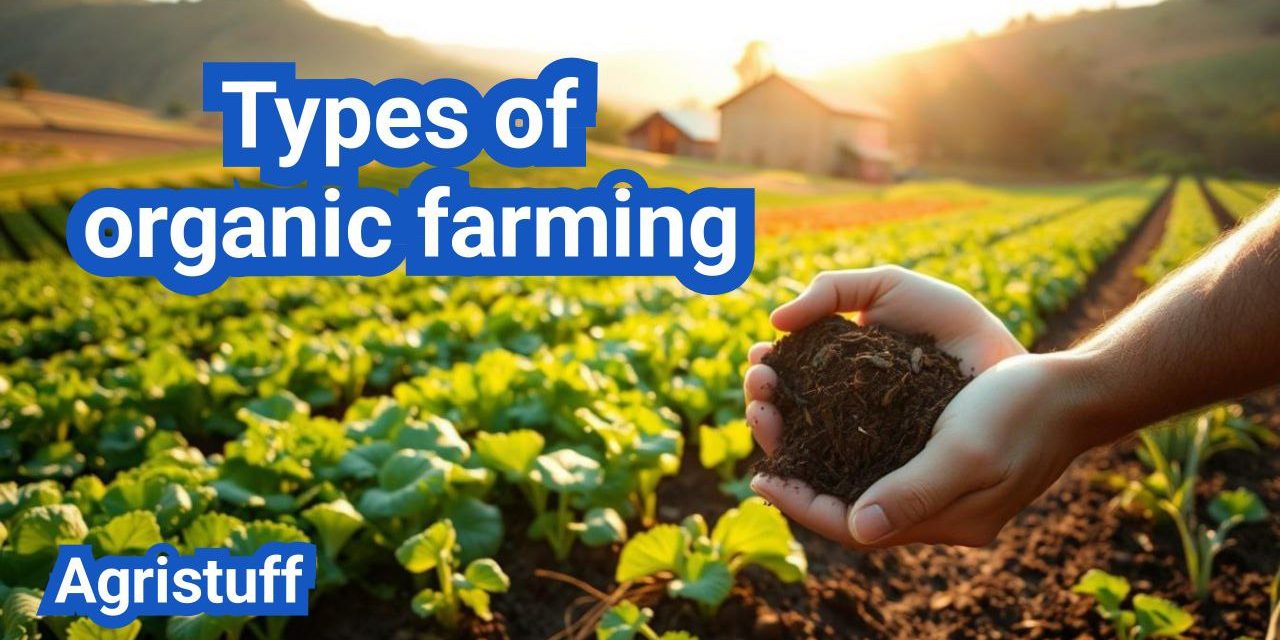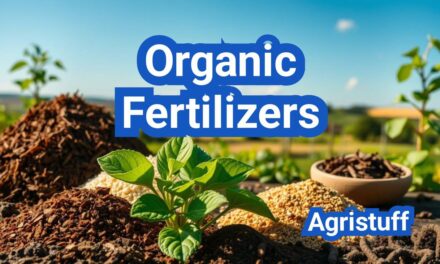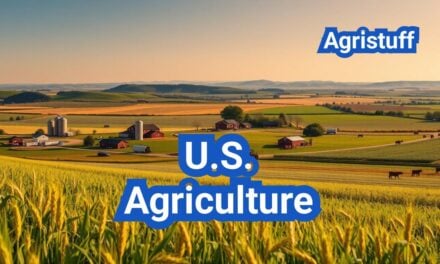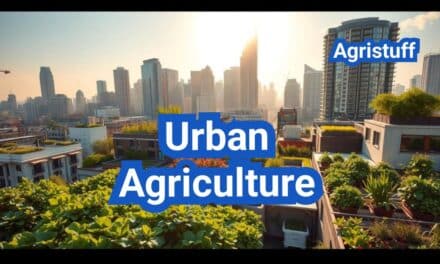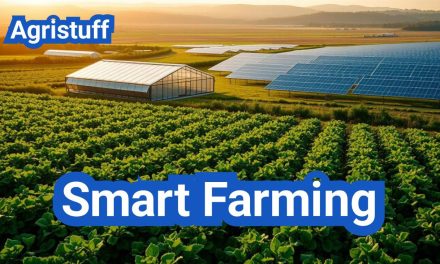Sustainable agriculture is gaining momentum, and organic farming is at its core. Organic farming encompasses various methods that work in harmony with nature, avoiding synthetic fertilizers, GMOs, and pesticides.
By maintaining soil health through cover crops, crop rotations, and compost, organic farming promotes ecological balance and conserves biodiversity. This comprehensive guide explores the different approaches to organic farming, their benefits, and how they contribute to sustainable agriculture.
Key Takeaways
- Organic farming methods promote ecological balance.
- Crop rotations and compost maintain soil health.
- Sustainable agriculture conserves biodiversity.
- Organic farming avoids synthetic fertilizers and GMOs.
- Different approaches to organic farming offer various benefits.
Understanding Organic Farming Principles
Organic farming is built on a set of principles that prioritize natural processes and ecological balance. This approach to farming is fundamentally different from conventional methods, as it seeks to work with nature rather than against it.
Core Philosophy of Organic Agriculture
The core philosophy of organic agriculture revolves around the idea of maintaining soil health and achieving ecological balance. This philosophy is rooted in the understanding that a healthy farm ecosystem is crucial for producing nutritious food while minimizing environmental impact.
Soil Health as a Foundation
Soil health is considered the foundation of organic farming. Practices such as cover cropping, composting, and reduced tillage are used to enhance soil fertility and structure. A healthy soil ecosystem supports plant growth, improves water retention, and increases biodiversity.
Ecological Balance and Biodiversity
Achieving ecological balance is also a key principle of organic farming. This involves maintaining a diverse range of crops and supporting biodiversity within the farm ecosystem. By doing so, organic farmers can create resilient systems that are better equipped to withstand pests, diseases, and environmental stresses.
| Principle | Description | Benefits |
|---|---|---|
| Soil Health | Enhancing soil fertility through natural practices | Improved crop yields, better water retention |
| Ecological Balance | Maintaining biodiversity within the farm ecosystem | Increased resilience to pests and diseases, improved ecosystem services |
| Biodiversity | Supporting a diverse range of crops and wildlife | Enhanced ecosystem services, improved farm productivity |
Benefits of Adopting Organic Farming Methods

The benefits of organic farming are multifaceted, ranging from improved soil health to reduced environmental pollution. Organic farming practices have been recognized for their potential to enhance ecological balance and promote sustainable agriculture.
Environmental Advantages
Organic farming offers several environmental advantages. By avoiding the use of synthetic chemicals, organic farming reduces the risk of chemical runoff into water bodies, thereby protecting aquatic ecosystems.
Reduced Chemical Runoff
Chemical runoff from conventional farming can lead to water pollution, harming aquatic life. Organic farming practices, such as using natural pest control methods and organic fertilizers, minimize this risk. For instance, a study comparing chemical runoff from organic and conventional farms found significant reductions in pollution from organic farming practices.
| Farming Practice | Chemical Runoff | Water Quality Impact |
|---|---|---|
| Organic Farming | Low | Minimal Impact |
| Conventional Farming | High | Significant Pollution |
Carbon Sequestration Potential
Organic farming practices like cover cropping and composting contribute to carbon sequestration, mitigating climate change. These practices enhance soil carbon storage, reducing atmospheric CO2 levels.
By adopting organic farming methods, farmers can play a crucial role in reducing their carbon footprint. The potential for carbon sequestration through organic farming practices is substantial, offering a valuable strategy for combating climate change.
Types of Organic Farming Systems
Organic farming encompasses a diverse range of systems, each with its unique principles and practices. These systems have evolved to promote ecological balance, conserve biodiversity, and improve soil health.
Overview of Major Organic Farming Categories
Major organic farming categories include polyculture, biodynamic farming, and permaculture. Polyculture involves growing multiple crops together, enhancing biodiversity and reducing pests and diseases. Biodynamic farming treats the farm as a living organism, integrating cosmic and terrestrial influences to promote soil fertility and ecological balance. Permaculture designs farming systems that are sustainable and self-sufficient, mimicking natural ecosystems.
The historical development of organic farming methods dates back to the early 20th century when farmers began to move away from chemical-based agriculture. Pioneers like Sir Albert Howard and Masanobu Fukuoka contributed significantly to the development of organic practices. Their work laid the foundation for modern organic farming systems.
Global Distribution of Farming Types
Organic farming systems are practiced globally, with varying distributions depending on regional conditions. Polyculture is widely practiced in tropical regions, where multiple crops are grown together to maximize land use. Biodynamic farming has a strong following in Europe and North America, where its holistic approach is appreciated. Permaculture is gaining popularity worldwide, particularly in Australia and Southeast Asia, due to its sustainable design principles.
As the world moves towards more sustainable agricultural practices, understanding the different types of organic farming systems becomes increasingly important. By adopting these systems, farmers can improve soil health, conserve biodiversity, and promote ecological balance.
“The future of agriculture lies in its ability to adapt and evolve in harmony with nature.” –
Unknown
In conclusion, organic farming systems offer a range of approaches to sustainable agriculture. By understanding and implementing these systems, farmers can contribute to a healthier environment and more sustainable food production.
How to Implement Biodynamic Farming

Implementing biodynamic farming requires a deep understanding of its underlying principles and philosophy. Biodynamic farming is an agricultural approach that considers the farm as a self-contained organism, influenced by both terrestrial and cosmic factors.
Principles and Philosophy of Biodynamics
The principles of biodynamic farming were outlined by Rudolf Steiner, emphasizing a holistic approach to agriculture. This method views the farm as a living ecosystem where soil, plants, and animals are interconnected.
Cosmic and Terrestrial Influences
Biodynamic farming considers the influence of celestial bodies, such as the moon and planets, on agricultural practices. For instance, planting calendars are often based on lunar cycles, believed to affect plant growth.
Farm as a Self-Contained Organism
A biodynamic farm is seen as a closed ecosystem that is capable of producing its own fertility. This is achieved through practices like composting and the use of biodynamic preparations to enhance soil quality.
The following table illustrates key practices in biodynamic farming and their benefits:
| Practice | Description | Benefit |
|---|---|---|
| Biodynamic Composting | Preparing compost with specific biodynamic preparations | Enhances soil fertility and structure |
| Lunar Planting Calendar | Planting according to lunar cycles | Optimizes plant growth and yield |
| Biodynamic Preparations | Using specific herbal and mineral preparations | Stimulates soil and plant health |
By understanding and applying these principles, farmers can create a more sustainable and balanced agricultural system.
Establishing Permaculture Systems
Permaculture systems offer a holistic approach to sustainable living by designing ecosystems that are both productive and self-sustaining. This method of farming and land management aims to create a diverse and resilient environment that requires minimal external inputs.
Core Concepts and Design Principles
The core of permaculture lies in its ability to mimic nature, creating diverse and resilient ecosystems. Design principles are fundamental to permaculture, guiding the arrangement of elements to maximize efficiency and productivity.
Zones and Sectors Planning
Effective permaculture design involves zones and sectors planning. Zones are areas designated based on their proximity to the center of activity and the frequency of use, while sectors refer to the external influences such as sunlight, wind, and water flow. Proper zoning and sector planning are crucial for optimizing energy efficiency and resource management.
Energy Efficiency in Design
Energy efficiency is a key consideration in permaculture design. By carefully planning the layout and management of the system, it’s possible to minimize waste and reduce the need for external energy inputs. This includes strategies such as using renewable energy sources, conserving water, and promoting biodiversity.
| Zone | Description | Examples of Use |
|---|---|---|
| Zone 0 | The center of activity, typically the home or main building. | Residence, greenhouse |
| Zone 1 | Areas that require frequent attention. | Herb garden, vegetable garden |
| Zone 2 | Areas for plants that require less frequent maintenance. | Orchard, larger herb garden |
In conclusion, establishing permaculture systems involves a thoughtful and multi-faceted approach to land management. By applying core concepts and design principles, including zones and sectors planning and energy efficiency in design, individuals can create sustainable and productive ecosystems.
Developing Agroforestry and Silvopasture

By combining trees with crops and livestock, agroforestry and silvopasture systems offer a holistic approach to farming that mimics natural ecosystems. These practices not only enhance biodiversity but also improve ecosystem services, contributing to more sustainable agricultural landscapes.
Integrating Trees with Crops and Livestock
Integrating trees into farming systems requires careful planning to ensure that the trees, crops, and livestock coexist beneficially. This integration can lead to improved soil health, increased biodiversity, and enhanced ecosystem services.
Tree Species Selection
Selecting the right tree species is crucial for the success of agroforestry and silvopasture systems. The chosen species should be compatible with the local climate, soil type, and other components of the farming system. Nitrogen-fixing trees, for example, can enhance soil fertility, while trees with deep roots can help stabilize the soil and improve water infiltration.
Spatial Arrangement Strategies
The spatial arrangement of trees, crops, and livestock is another critical factor. Strategies can range from planting trees in alleys between crop rows to integrating trees into pasture systems. The design should optimize the use of space while minimizing competition between components.
| System Component | Benefits | Considerations |
|---|---|---|
| Trees | Soil stabilization, biodiversity enhancement, shade provision | Species selection, spatial arrangement |
| Crops | Diverse produce, improved soil health through rotation | Crop selection, rotation planning |
| Livestock | Manure for fertilizer, pest control through grazing | Animal welfare, grazing management |
Agroforestry and silvopasture systems represent a forward-thinking approach to agriculture, combining productivity with ecological stewardship. By understanding the principles of integrating trees with crops and livestock, farmers can create more resilient and diverse farming systems.
Practicing No-Till Organic Farming

No-till organic farming represents a paradigm shift in agricultural practices, focusing on minimizing soil disturbance to improve overall soil health. This method has gained significant attention due to its potential to enhance soil conservation and promote ecological balance.
Soil Conservation Benefits
No-till organic farming offers substantial benefits for soil conservation. By reducing tillage, farmers can minimize soil erosion, improve soil structure, and increase water retention. This approach not only protects the soil but also contributes to a more sustainable farming system.
Microbial Activity Enhancement
One of the key advantages of no-till farming is the enhancement of microbial activity. By leaving the soil undisturbed, the habitat for beneficial microbes is preserved, allowing them to thrive. This, in turn, improves soil fertility and overall health.
Erosion Prevention Techniques
Implementing erosion prevention techniques is crucial in no-till organic farming. Methods such as cover cropping and mulching help protect the soil surface, reducing the risk of erosion. These practices not only prevent soil loss but also contribute to improved soil health and biodiversity.
In conclusion, practicing no-till organic farming is a valuable strategy for promoting soil conservation and enhancing ecological balance. By adopting this approach, farmers can improve soil health, reduce erosion, and contribute to a more sustainable agricultural system.
Implementing Crop Rotation and Polyculture

Effective crop rotation and polyculture are crucial for maintaining soil health and biodiversity in organic farming systems. These practices not only enhance soil fertility but also reduce pest and disease pressure, promoting a balanced ecosystem.
Crop rotation involves changing the type of crops grown on a specific area of land from one season to another. This practice helps in maintaining soil fertility, as different crops have varying nutrient requirements. For instance, legumes fix nitrogen in the soil, benefiting subsequent crops that require high nitrogen levels.
Planning Effective Rotation Cycles
Planning effective rotation cycles is vital for maximizing the benefits of crop rotation. This involves considering several factors, including the type of crops, their nutrient demands, and how they interact with the soil and pests.
Plant Family Groupings
One key aspect of planning rotation cycles is grouping crops by their plant families. Crops within the same family often share similar characteristics and are susceptible to similar pests and diseases. For example, tomatoes, potatoes, and peppers belong to the Solanaceae family and can be affected by similar pests. Rotating crops from different families can help break the life cycle of these pests.
Nutrient Demand Sequencing
Nutrient demand sequencing is another critical factor in crop rotation. Crops have different nutrient requirements, and sequencing them appropriately can help maintain soil fertility. For instance, following a legume crop with a high nitrogen-demanding crop like corn can reduce the need for synthetic fertilizers.
| Crop | Nutrient Demand | Family |
|---|---|---|
| Corn | High N | Poaceae |
| Legumes | N Fixing | Fabaceae |
| Tomatoes | Medium N, High K | Solanaceae |
As noted by agricultural experts, “Crop rotation is a fundamental practice in sustainable agriculture, enhancing soil health, and reducing the reliance on chemical inputs.”
“Crop rotation is a fundamental practice in sustainable agriculture, enhancing soil health, and reducing the reliance on chemical inputs.”
By implementing crop rotation and polyculture, farmers can create a more resilient and productive farming system. These practices not only benefit the soil and ecosystem but also contribute to a more diverse and nutritious crop yield.
Managing Organic Livestock and Integrated Systems

Organic livestock management involves a holistic approach that integrates animal welfare, pasture health, and ecosystem balance. This comprehensive strategy is essential for maintaining the sustainability and productivity of organic farming systems.
Pasture-Based Animal Husbandry
Pasture-based animal husbandry is a critical component of organic livestock management. It involves allowing animals to graze on pasture, which improves their welfare and reduces the need for external feed inputs.
Rotational Grazing Techniques
Rotational grazing is a technique used in pasture-based systems to manage grasslands effectively. By rotating animals through different grazing areas, farmers can prevent overgrazing, promote soil health, and increase biodiversity.
The benefits of rotational grazing include:
- Increased soil fertility
- Improved animal health
- Enhanced ecosystem services
Forage Management Strategies
Effective forage management is crucial for maintaining the nutritional quality of pastures. Strategies include monitoring pasture health, adjusting stocking rates, and implementing conservation practices like haymaking or silage.
| Forage Management Practice | Benefits |
|---|---|
| Monitoring pasture health | Early detection of issues, improved animal health |
| Adjusting stocking rates | Prevents overgrazing, maintains soil health |
| Conservation practices | Provides feed during scarcity, promotes biodiversity |
By integrating rotational grazing techniques with effective forage management strategies, farmers can enhance the overall sustainability of their organic livestock operations. This integrated approach not only improves animal welfare and pasture health but also contributes to a more resilient farming system.
Navigating Organic Certification and Regulations

Navigating the complexities of organic certification requires a thorough grasp of USDA organic standards. Organic certification is a critical step for farmers and producers who want to label their products as organic, ensuring compliance with national standards.
USDA Organic Standards
The USDA organic standards are a set of guidelines that dictate how organic products are grown, handled, and processed. These standards are designed to ensure that organic products are produced in a way that conserves natural resources and does not harm the environment.
Prohibited and Allowed Substances
One of the key components of USDA organic standards is the list of prohibited and allowed substances. Prohibited substances include synthetic fertilizers, pesticides, and genetically engineered organisms. On the other hand, allowed substances include natural materials and certain synthetic substances that are approved for use in organic production.
| Substance Category | Examples | Status |
|---|---|---|
| Fertilizers | Synthetic fertilizers | Prohibited |
| Pesticides | Natural pesticides like neem oil | Allowed |
| Genetic Engineering | Genetically modified organisms (GMOs) | Prohibited |
Land Requirements and Waiting Periods
To be certified organic, farmers must also comply with land requirements and waiting periods. The land must not have had any prohibited substances applied to it for at least three years prior to the harvest of an organic crop. This waiting period ensures that the land is free from contaminants and synthetic residues.
By understanding and adhering to USDA organic standards, farmers and producers can achieve organic certification, enhancing the credibility and marketability of their products.
Essential Tools and Equipment for Organic Farming

A range of tools and equipment is crucial for the effective management of organic farming systems. Organic farming practices necessitate the use of diverse tools to maintain soil health, control weeds, and ensure efficient crop establishment.
Hand Tools and Small Equipment
Hand tools and small equipment play a vital role in organic farming, enabling farmers to perform tasks with precision. These tools are essential for maintaining soil quality and controlling weeds without the use of synthetic chemicals.
Specialized Weeding Tools
Specialized weeding tools, such as hoes and weeding forks, are designed to control weeds effectively. These tools help in minimizing the use of herbicides and maintaining soil structure.
Seeding and Planting Equipment
Efficient seeding and planting equipment, including seed drills and manual seeders, are crucial for optimal crop establishment. These tools ensure that seeds are planted at the correct depth and spacing, promoting healthy crop growth.
The selection of appropriate tools and equipment is vital for the success of organic farming operations. By utilizing the right tools, farmers can improve efficiency, reduce labor costs, and maintain the integrity of their organic practices.
Overcoming Common Challenges in Organic Farming

The absence of synthetic pesticides in organic farming necessitates innovative approaches to pest and disease control. Organic farmers must adopt a holistic approach to manage pests and diseases effectively.
Pest and Disease Management
Effective pest and disease management is crucial for maintaining ecological balance and ensuring crop health. Organic farming relies on methods that promote biodiversity and soil health.
Biological Control Methods
Biological control involves introducing beneficial insects or organisms that prey on pests, thereby reducing the need for chemical pesticides. For example, ladybugs are natural predators of aphids and can be used to control aphid populations.
A detailed comparison of different biological control methods is provided in the following table:
| Method | Description | Effectiveness |
|---|---|---|
| Beneficial Insects | Introducing natural predators of pests | High |
| Microbial Control | Using microbes to control pests | Moderate |
Preventative Cultural Practices
Preventative cultural practices, such as crop rotation and intercropping, can significantly reduce the incidence of pests and diseases. Crop rotation breaks the life cycle of pests and promotes soil health.
“Crop rotation is a powerful tool in the fight against pests and diseases. By changing the crop, you can break the life cycle of the pest, reducing the need for other control methods.”
Intercropping with pest-repellent plants is another effective strategy. For instance, planting marigolds with tomatoes can deter nematodes.
Conclusion
Organic farming encompasses a diverse range of practices and systems, all aimed at promoting ecological balance and sustainability. By understanding and implementing these methods, farmers can contribute to a more sustainable food system, and consumers can make informed choices about the food they eat.
This comprehensive guide has explored the various types of organic farming, their benefits, and the challenges faced by organic farmers. As the demand for organic produce continues to grow, the importance of adopting sustainable agricultural practices becomes increasingly evident. An organic farming summary highlights the potential for these methods to enhance biodiversity, improve soil health, and reduce environmental impact.
In conclusion, embracing organic farming practices is a crucial step towards creating a more sustainable food system. By adopting these methods, farmers and consumers can work together to promote ecological balance and support a healthier environment.
FAQ
What is the core philosophy of organic agriculture?
The core philosophy of organic agriculture revolves around maintaining soil health and achieving ecological balance. Soil health is the foundation, supported by practices that enhance its fertility and structure.
What are the benefits of adopting organic farming methods?
Adopting organic farming methods provides numerous environmental advantages, including reducing the risk of chemical runoff into water bodies and contributing to carbon sequestration.
What is biodynamic farming, and how is it implemented?
Biodynamic farming treats the farm as a living organism, integrating cosmic and terrestrial influences. Practices include preparing biodynamic compost and following a planting calendar that considers lunar cycles.
What is permaculture, and how is it established?
Permaculture designs farming systems that are sustainable and self-sufficient. Establishing permaculture systems involves applying core concepts and design principles to create sustainable ecosystems.
What are the benefits of no-till organic farming?
Practicing no-till organic farming offers several benefits, including improved soil conservation and enhanced microbial activity.
How is crop rotation and polyculture implemented?
Implementing crop rotation and polyculture involves planning effective rotation cycles that consider plant family groupings and nutrient demand sequencing.
What are the key considerations for managing organic livestock?
Managing organic livestock requires a focus on pasture-based animal husbandry, utilizing rotational grazing techniques to maintain soil health and promote animal welfare.
What is involved in navigating organic certification?
Navigating organic certification requires understanding USDA organic standards, including lists of prohibited and allowed substances, and complying with land requirements and waiting periods.
What are the essential tools and equipment for organic farming?
Essential tools and equipment for organic farming include hand tools and small machinery that facilitate tasks such as weeding and seeding.
How are common challenges in organic farming overcome?
Overcoming common challenges in organic farming requires effective strategies for pest and disease management, including biological control methods and preventative cultural practices.
What is agroforestry, and how is it developed?
Agroforestry involves integrating trees with crops and livestock. Developing agroforestry systems requires careful planning to select appropriate tree species and design spatial arrangements.
What are the environmental advantages of organic farming systems?
Organic farming systems provide numerous environmental advantages, including enhancing biodiversity, improving ecosystem services, and mitigating climate change.

